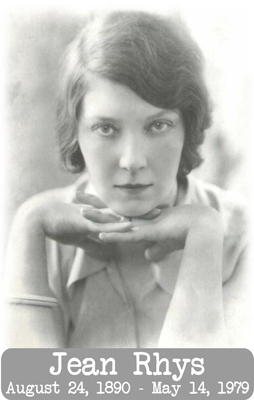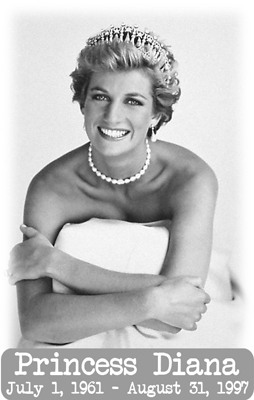
 I recently read a short story by the Englishwoman, A.S. Byatt, who is a household name in Britain. Byatt wrote the novel Possession on which the movie of the same name, starring Gwyneth Paltrow, is based. I liked the movie, not so much the short story.
I recently read a short story by the Englishwoman, A.S. Byatt, who is a household name in Britain. Byatt wrote the novel Possession on which the movie of the same name, starring Gwyneth Paltrow, is based. I liked the movie, not so much the short story.
The story depicts a woman beyond middle-age who visits a beauty salon several times over the course of a few months. While having her hair done she listens to her male hairdresser talk about his personal life, and contemplates, in the mirror, her own physical “disintegration.” At one point the hairdresser hands the protagonist, Susannah, off to a young female apprentice who finishes up the session. Susannah hates the results, goes berserk, wrecks the beauty parlor, and walks out. Back home, her husband enters the house (there has been no mention of a husband and now we learn from the narrator he treats his wife thoughtlessly) and tells her he loves her new hair style, saying she looks twenty years younger. End of story. (Note: A synopsis usually does a disservice to any story.)
 Like I said, the story didn’t do much for me. But later it occurred to me that women might identify with the story in ways that I didn’t. As it happens, Byatt is wildly popular with women readers in England. The fact I don’t like a story has nothing to do with it being “good” or “bad.” Our response to any work of art is subjective. It’s natural that women readers respond to work by women in ways that men don’t, and vice versa. Different strokes for different folks. Not that we all can’t get lost in a great book no matter who wrote it.
Like I said, the story didn’t do much for me. But later it occurred to me that women might identify with the story in ways that I didn’t. As it happens, Byatt is wildly popular with women readers in England. The fact I don’t like a story has nothing to do with it being “good” or “bad.” Our response to any work of art is subjective. It’s natural that women readers respond to work by women in ways that men don’t, and vice versa. Different strokes for different folks. Not that we all can’t get lost in a great book no matter who wrote it.
It’s no longer news that women in the art world, as in other walks of life, were relegated to second-class citizenship in years gone by. In the 30s and 40s when (male) writers were being lionized by the public and the press as they never would again, American literature began and ended with Hemingway and Fitzgerald. Yet a contemporary of theirs, Jean Rhys, born in the British Caribbean, wrote stories and novels every bit the equal of Hemingway’s, in my opinion. (I admit I’ve never been a big Hemingway fan.) Yet how many people have heard of Jean Rhys?
Movies by and large are still a male bastion. Mainstream movies for the most part today are being produced, written, and directed by men. As a result most of the major roles end up in the laps of male actors. It’s an often repeated axiom in Hollywood that when an actress turns forty, she’s done. Although this is less true today than in the past. Down through the years great actresses routinely took back seats to male actors. As did writers like Jean Rhys to their contemporary male writers. Although in films there were exceptions: Garbo, Bette Davis, Kate Hepburn.
Take for example, On the Waterfront (1954). We all know Brando was Brando in that great movie. For my money Eva Marie Saint’s performance was equal to Brando’s, granted her character had less screen time than did his. In their dramatic scenes together, Eva Marie Saint goes toe to toe with Brando and doesn’t blink.
 Same thing with Piper Laurie in The Hustler (1961). Cast in another one of those thankless girlfriend/wife roles actresses have been putting up with for decades, her great performance added immeasurably to that “Paul Newman movie.” She was Newman’s equal throughout the film.
Same thing with Piper Laurie in The Hustler (1961). Cast in another one of those thankless girlfriend/wife roles actresses have been putting up with for decades, her great performance added immeasurably to that “Paul Newman movie.” She was Newman’s equal throughout the film.
Donna Reed received an Oscar for her supporting role in From Here to Eternity (1953), which was a travesty because Deborah Kerr played a much more complex role in the movie as the jilted wife of an army captain. A humiliated, vulnerable Kerr takes up with the Burt Lancaster character and plays her part with as much sophistication and dignity as could be imbued in any troubled woman under the circumstances. A totally overlooked performance.
The list goes on. Susan Tyrrell’s performance as a bar hag in John Huston’s Fat City (1971). Teresa Wright going toe to toe with the great Bette Davis in The Little Foxes (1941). Simone Signoret in Room at the Top (1958). Fanny Ardant’s poignant portrayal of Maria Callas in Zefferelli’s Forever Callas (2002). Melora Walters portrayal of a cocaine junky in Magnolia (1999). Charlotte Gainsbourg in The City of Your Final Destination (2009). All Oscar-worthy performances. Yet none of these women, like Brando and Newman, were, or have been, given the chance to become household names.
One of the all-time virtuoso performances was turned in by the British actress Maggie Smith in a little known HBO film, My House in Umbria (2003). Yet down through the years all we hear about from England are the “sirs,” John Gielgud, Laurence Olivier, Ralph Richardson, etc. Although it should be said they won their reputations in the theater. Maggie Smith is every bit their equal as a film actor and has been for decades.
The fact that women continue to be underrepresented in positions of prominence in society was brought home to me when Diana, Princess of Wales, died. The reaction to her death hit me like a thunderbolt. I had no idea she was held in such esteem, especially by the world’s women. As I watched the television coverage it dawned on me that because there is such a dearth of role models for women on the world stage, when someone as charismatic as Diana comes along, women out of sheer necessity identified with her in droves. In contrast, public role models for men are everywhere: Athletes, billionaire business-types, rock stars, politicians. . . In terms of numbers there’s no comparison. Diana’s death and the worldwide reaction to it woke me up to this fact.
In the early 1960s when Jean Rhys was dying of alcoholism, poverty, and despair, she was awarded a prestigious literary prize for her classic novel, Wide Sargasso Sea. With the prize came some money. When notified of the award, she said, “It came too late.”


